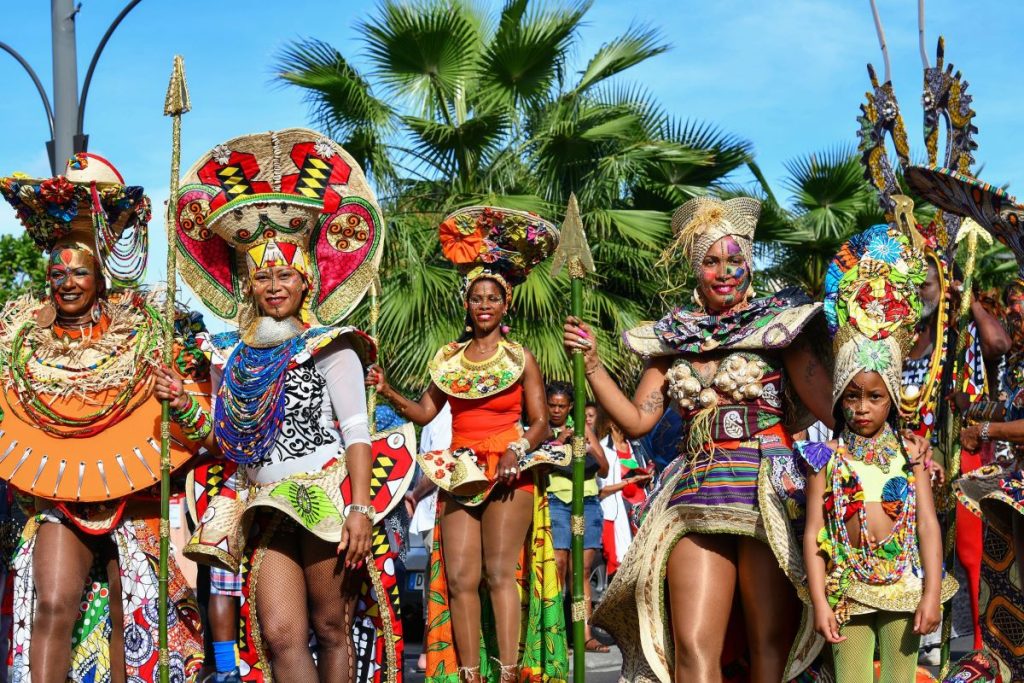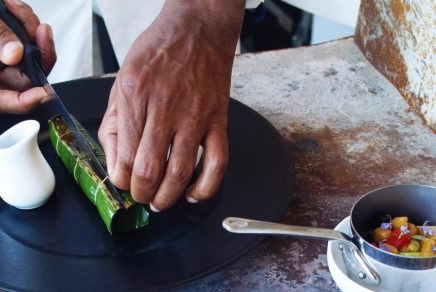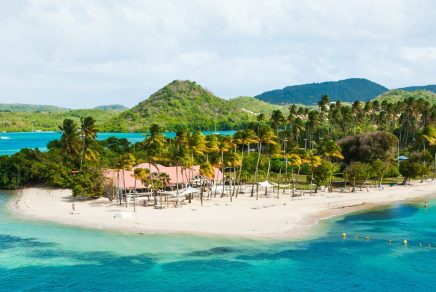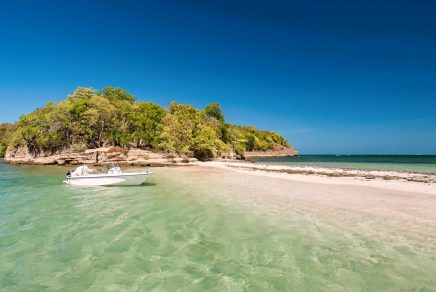Share the article
Carnival: a unique celebration where streets come alive with costumes, dance, music, feasting, and a contagious, electrifying energy. In Martinique, Carnival is celebrated with unmatched passion and tradition, creating an experience that goes beyond any ordinary festival.
Jessica Marie from the Martinique Tourism Office describes the event with infectious excitement: “Creative costumes, vidés (dancing parades), drum music that’s different from other islands—not steel drums, but something more deconstructed, played with chachas, bamboo shakers filled with sand that make this magical shooooka shooooka sound.”
With her enthusiasm, it’s clear that Martinique’s Carnival is a spectacle like no other.
Dimanche Gras (Fat Sunday)
Carnival kicks off in the early hours of Sunday morning in Fort-de-France with the famous vidé en pyjama. At 4 a.m., the streets are suddenly alive with the pounding drums of local bands and the roaring bradjaks—loud, decorated cars modified to make a thunderous noise. This early-morning pyjama parade is the first official event of Carnival and a wake-up call to anyone still sleeping.
By afternoon, crowds dressed in colorful costumes flood the streets of Fort-de-France. Bright tutus, neon fishnets, feather boas, and playful wigs turn the city into a kaleidoscope of colors and characters. Each group of revelers follows the groupe à pied (marching band) they like best, dancing to the irresistible rhythms.
Leading the parades is Vaval, the King of Carnival, who is revealed to the public for the first time. This large papier-mâché figure on a float is usually a satire of recent events or political issues and serves as a symbol throughout Carnival. In the end, Vaval will be burned on Ash Wednesday as a symbolic gesture of penance after days of exuberant celebration.
Lundi Gras (Fat Monday)
The festivities resume early Monday morning with yet another vidé en pyjama. By 4:30 a.m., drumbeats and singing echo through the streets, and some are even lucky enough to join the parade right in their PJs. Those who want to dive deeper into Martinique’s Carnival culture wake up to follow the drums in this beloved tradition.
Later in the day, the theme shifts to the famous mariage burlesque. This whimsical event sees men dressed as glamorous brides and women as reluctant grooms, parading through the city in a humorous twist on traditional wedding roles. The marriage parade brings out the island’s playful side, with each couple creatively adding their own spin.

Mardi Gras (Fat Tuesday)
Tuesday is the height of Carnival celebrations. While Mardi Gras is celebrated worldwide, Martinique’s version is uniquely vibrant, as bands from all over the island converge on Fort-de-France for the ultimate parade. The theme for the day is red and black, and the island’s premier bands, including the famous Va K Band, lead the way.
Backstage with Va K Band, there’s a frenzy of last-minute preparations—yellow tulle, red ribbons, and glitter cover the band members. Costumes are adjusted, makeup is applied in an assembly line, and an air of excitement fills the room. When bandleader Jessy blows her whistle, the entire troupe marches forward, drumming so intensely that the sound reverberates through the crowd.
As the parade weaves through Fort-de-France, the drumming and music grow louder and more powerful. The official parade may end at sunset, but the celebration does not. Street parties spring up on every corner, and everyone continues to dance, feast, and revel late into the night.
Ash Wednesday
The final day of Carnival, Ash Wednesday, takes on a more solemn yet lively tone. Dressed in black and white, the people of Martinique gather to mourn the impending end of Carnival and the symbolic death of Vaval, who will be burned at sunset. Fort-de-France transforms into a monochrome sea, with costumes that are as intricate and symbolic as ever.
Among the characters are the Neg gwo siwo, men covered in a mixture of molasses and charcoal, who march through the streets in a fearsome, mysterious display. The Mariannes lapo fig, women cloaked in dried banana leaves, make their way through the crowds, as do the Diablesses, who don glittering costumes and mourn the end of Carnival. The Touloulous—women completely masked and covered in feathers—add to the mystique of the final day.
As the sun begins to set, anticipation builds. The crowd gathers by the waterfront to witness the burning of Vaval. At 7:15 p.m., the massive papier-mâché figure goes up in flames, marking the official end of Carnival. Yet, like the lingering feathers and stray boa pieces floating through the streets, the spirit of Carnival remains, leaving everyone with vivid memories of joy, tradition, and celebration.
Though Carnival has concluded, the island’s vibrant energy and the echo of drums stay with those who experienced it, a testament to Martinique’s love for life, tradition, and unforgettable festivity.







